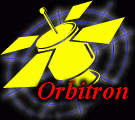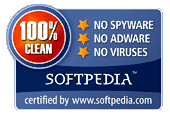Satellite tracking • HAM radio • ISS • Visual observing • Tracking software • Iridium flares • Satellite tracking at home

|
||||||||||||
| home | downloads | cardware | guestbook | links | about me | my apps | ||||||

|
||||||||||||
| home | downloads | cardware | guestbook | links | about me | my apps | ||||||
 |
version 3.71 - 2005.09.08 - Win 9x/Me/2k/XP/2k3/Vista (C) 2001-2005 by Sebastian Stoff Orbitron is Cardware! Click here to see postcards list. What is satellite tracking? |
[ More languages ] [ For translators ] |
| News |
 |
Downloads |
|
2024.03.10: Orbitron post development donation 2024.02.08: Orbitron post development donation 2007.11.07: New Orbitron forum |
|
| LATEST POSTCARDS |
|
Orbitron is a satellite tracking system for radio amateur and observing purposes. It's also used by weather professionals, satellite communication users, astronomers, UFO hobbyist and even astrologers. Application shows the positions of satellites at any given moment (in real or simulated time). It's FREE (Cardware) and it's probably one of the easiest and most powerful satellite trackers, according to opinions of thousands of users from all over the world. I'm still working on it, waiting for your opinions and bug reports. Please try it. If you like it - tell your friends about it and send me a postcard... FEATURES:
SYSTEM REQUIREMENTS (recommendations)
WHAT'S NEW: 3.71 / 2005.09.08
3.70 / 2005.08.11
3.60 / 2005.07.12
|
| What is satellite tracking? |
|
The first artificial satellite was put in the space on October 4, 1957 by the Russians. It was named Sputnik 1, and spent 92 days in Earth orbit. Since then man has launched thousands of rockets, and put thousands of satellites in orbit. There are more than 8000 objects in orbit now, including operational, non-operational, rocket bodies, and debris. They are orbiting at an altitude from 150, up to several thousands kilometers. For more than ten years people have been able to track satellites on a computer using satellite tracking software like Orbitron. Due to predictable conditions of satellite movement in space (lack of atmosphere) computer software can calculate a satellite's position for given moment. Calculations are done based on known orbit parameters determined at epoch. Known orbital parameters like inclination, eccentricity, argument of perigee, mean motion (revolutions per day), let us track satellite for a reasonable period of time after epoch. Orbital data for each object is grouped, and distributed as a Two Line Element (TLE) file. To keep tracking software working precisely, one should update elements periodically. For low orbiting objects (altitude less than 500 km) TLE data should be updated every few days. For higher orbits, you can update your TLE every few weeks. Other important things include making your predictions as close to real time as possible by using time synchronization, and the precise coordinates of your location. You must remember that TLE data for an object that has maneuvered since the last elset is no longer any good. Updating is most important for satellites like Progress, Soyuz, and the Space Shuttle which maneuvers often (docking, deorbit, changing of orbit). Why do we track satellites? There are several reasons. One might want to observe (even with the naked eye) ISS passing over their home or brilliant Iridium flares. Radio amateurs use satellite tracking software to obtain the best pass for QSO with another radio amateur. Such software can help you with your hobby, and will help you understand more about Astronomy, and Physics. So even if you're a beginner, don't hesitate to download satellite tracking software like Orbitron. Change your home into mission control center! Remember, satellite tracking is the easiest ever with Orbitron! |

|
|